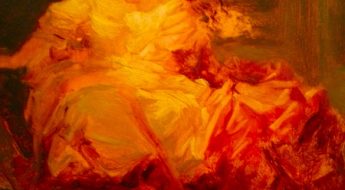A Childhood at Versailles consists of the first 5 chapters of the memoirs of Mme de Boigne (1781-1866), née Adèle d’Osmond, who was a French salon hostess and writer. She was born in the Château de Versailles and lived at the court of Louis XVI and Marie-Antoinette until her family fled to England during the Revolution. Later in her long life, she married a rich soldier of fortune 30 years her senior, hosted a brilliant salon in Paris, and became an intimate of the last French queen, Marie-Amélie, consort of King Louis Philippe (r. 1830-1848). Childless herself, Mme de Boigne addressed her memoirs to her grandnephew. The memoirs were not published until 1907, under the title Récits d’une tante, or An Aunt’s Tales. They’ve never been published in English, as far as I know, so I’ve decided to translate the first 5 chapters, the ones that take place mainly at Versailles, and post them here on this blog for interested readers to enjoy for free.
The chapters are quite lengthy, so I’ve broken each one into several parts. In Part 2.5, the author tells how the royal family spent their evenings at Versailles, describing the ceremony of the coucher, or the royal going-to-bed, as practised under Louis XVI.
A Childhood at Versailles, Chapter Two, Part 5 (2.5)
At nine o’clock the whole royal family gathered for supper in the apartments of Madame, the wife of Monsieur. They were exclusively amongst themselves there, and were only very rarely absent. There were positive reasons apart from displeasing the King. Even the Comte d’Artois, who was very bored by these occasions, was hardly ever absent from them. Court gossip was recounted and family matters were discussed. They were very much at ease and often very merry, for it must be said that once they were separated from the entourages that importuned them, these princes were the best people in the world. After supper, they all went their own ways.
The King went to his coucher.
What was called the coucher took place every evening at half past nine. The men of the Court gathered in Louis XIV’s bedchamber (which was not the one where Louis XVI slept). I believe that anyone who had been presented had access to it.
The King arrived from an inner cabinet, followed by his servants. His hair was rolled up and his orders had been taken off. Without acknowledging anyone, he passed through the balustrade around the bed, and the almoner received the prayerbook and a large candlestick with two candles from the hands of the valet. The almoner followed the King through the balustrade, gave him the book, and held the candlestick during the prayer, which was short. The King went back out into the part of the room where the courtiers were gathered, and the almoner handed the candlestick back to the valet, who took it to the person designated by the King, who held it for the rest of the time that the coucher lasted. This was a much sought-after distinction; accordingly, the first question that those arriving from the coucher were asked in every Court drawing room was, “Who had the candlestick?’ The choice, as happens always and everywhere, was rarely approved.
The King’s coat and waistcoat were taken off, and finally his shirt. He was naked to the waist, and in the presence of the Court, and often numerous distinguished foreigners, he scratched and rubbed himself as if he were alone.
The first valet gave the night shirt to the most qualified person, namely to a Prince of the Blood, if one were present; this was a right, not a favour. When it was a person that he was on familiar terms with, the King would play little tricks, evading the night shirt, dodging to the side, making the chosen one chase him about, and so on, and he accompanied these charming pranks with great guffaws which pained the people who were sincerely attached to him. Once the night shirt was on, he would put on his dressing gown, and three valets at once would undo his belt and the knees of his breeches, which fell to his feet; it was in this costume, hardly able to walk with such ridiculous fetters, that he began, dragging his feet, to go round the circle of courtiers.
The duration of this reception was anything but fixed; sometimes it only lasted a few minutes, sometimes nearly an hour, depending on the people who were there. When there were no releveurs present, as the courtiers, amongst themselves, called those who knew how to get the King to talk, it lasted scarcely ten minutes. Among the releveurs, the most skillful was the Comte de Coigny; he always took care to find out find out what the King was reading, and was very deftly able to bring the conversation around to what he thought would show him to advantage. The candlestick was thus frequently awarded to him, and his presence irked those who wanted the coucher to be brief.
When the King had had enough, he shuffled backwards towards an armchair that was pushed to him in the middle of the room, into which he dropped heavily, lifting his legs as he did so. Two kneeling pages simultaneously took hold of his shoes, pulled them off, and dropped them on the floor with a protocolary thud. At the moment he heard it, the usher opened the door, saying “Pass through, gentlemen.” Everyone went out and the ceremony was over. Nevertheless, the person who was holding the candlestick could stay behind if he had a private word to say to the King. This is what explains the great price attached to this strange distinction.
From there, the courtiers took the road to Paris or made their way to the various drawing rooms of Versailles where they had left the ladies, the bishops, those who had not been presented, and often those whose access was suspended. There were many antechamber intrigues in this Court life, and positions to which the whole nobility of France aspired.
It was at the coucher one evening that M de Créqui leaned against the balustrade around the royal bed and the usher on duty said to him, “Monsieur, you profane the King’s bedchamber.”
“Monsieur, I commend your exactitude,” he replied immediately.
This prompt retort was a great success.
The Queen, on leaving Madame’s apartments, went to Mme de Polignac’s, or to Mme de Lamballe’s on a Saturday. Monsieur went to see Mme de Balbi. Madame stayed in with her maids. The Comte d’Artois would make the rounds at Versailles or visit girls in Paris. The Comtesse d’Artois retired to her apartments with some of her bodyguards. And Mesdames, finally, would return to their ladies in waiting.
This concludes Part 2.5. Look for Part 2.6 in the first week of March.


















Leave a Comment